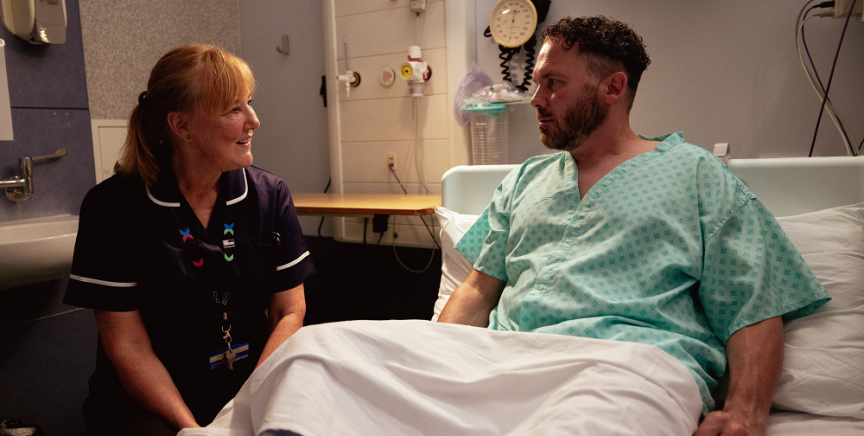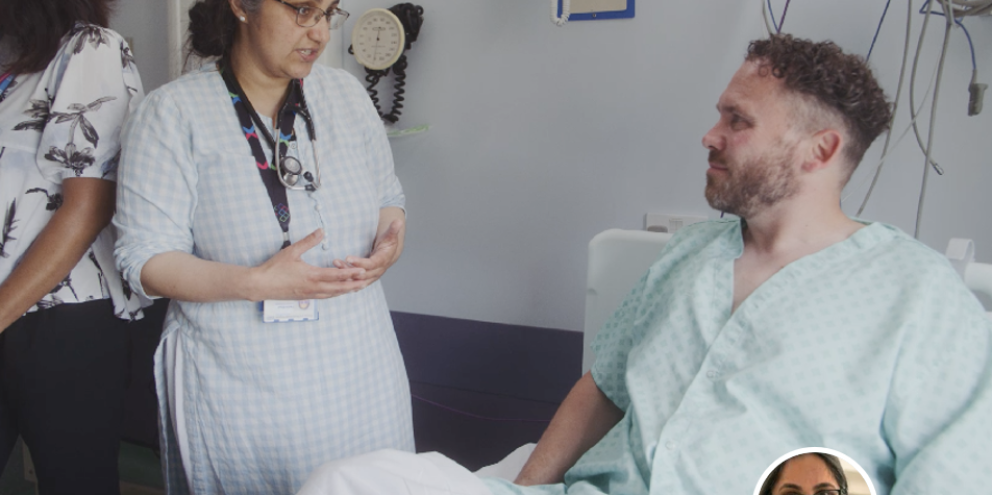Leon Davis is an engineer, father, and sports enthusiast. He’d always lived an active life, until one day he was surprised by a chest pain. After continuing to feel symptoms for three weeks, he was hospitalized, and an electrocardiogram found irregular results. In the hospital, he found out he needed a surgical procedure.
“I was petrified,” Leon recalls. “It just didn’t seem normal that all my life I’d been so healthy, so focused on fitness, that this had happened to me. I’ve never been that scared in my life, ever.”
Contrary to common perception, the risk for deterioration (including mortality) after surgery is up to 1,000 times higher than during surgery, making postsurgical monitoring an important part of patient safety. To make sure patients are recovering well and not experiencing complications, it’s essential for healthcare providers to closely monitor each patient’s vital signs for any changes, including their respiratory rate, pulse rate, and oxygen saturation.

During his recovery, Leon was able to remain completely mobile while his vital signs were continuously monitored by his healthcare providers with the Portrait Mobile wireless and wearable monitoring solution. Particularly after surgery, earlier patient mobilization is a key part of recovery and may help improve patient outcomes and reduce length of stay.
“Psychologically, it was great to wear, because you felt so much more secure,” Leon says. “After 20 minutes I kind of forgot it was there. But I had that comfort the whole time in the back of my mind. It just gave me that assurance that I was being monitored 24/7.”
“Care teams usually rely on traditional spot checks that typically occur only every 4 to 6 hours in recoveries such as Leon’s,” says Dr. Sadia Khan, consultant cardiologist at Chelsea and Westminster Hospital NHS Foundation Trust in London. But during recovery, time is of the essence. Relying on manual spot checks of patients’ vital signs could miss early signs of patient deterioration or instability. Even the smallest changes to a patient’s vital signs can indicate that a bigger problem may be developing, one that could go detected by intermittent spot checks.

“I think that this is an area that’s really ripe for improvement and potentially where technology has a key role to play,” says Dr. Khan. “Portrait Mobile is a wearable technology that essentially allows you to get hospital level-monitoring and care while you’re walking around the hospital. So instead of having to be confined to a particular space or a particular area, you can get on with moving, which is really important to your recovery, and not worry that you are missing healthcare or checks that are important.”
Undetected patient deterioration, particularly post-surgery, can lead to hazardous yet preventable consequences. Postoperative deaths account for 7.7% of fatalities, making them the third-highest cause of death worldwide. Continuously monitoring patients in the ward and having a real-time view of data can help clinicians catch early signs of patient deterioration early, so they can intervene proactively.
“At the end of the day,” Dr. Khan says, “care is about human-to-human interaction. What we don’t want is for caregivers to be spending a lot of their time doing routine things that don’t add value for the patient. Connected technology really lets us have time back, and we can use that time to actually care — to do what we were trained to do and what patients deserve and need.”

After recovering, Leon returned to his normal life, and he can play with his kids again. “I still have that element of feeling human now,” he says. “I’ve been shown that I’m not invincible, but I still kind of feel invincible deep down inside.”
Watch Leon’s story below and learn how continuous monitoring with Portrait Mobile supported his recovery.
Find more information on how Portrait Mobile is helping patients stay active while being monitored 24/7.









